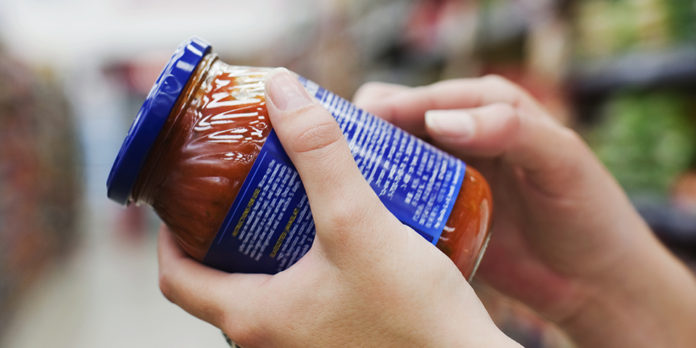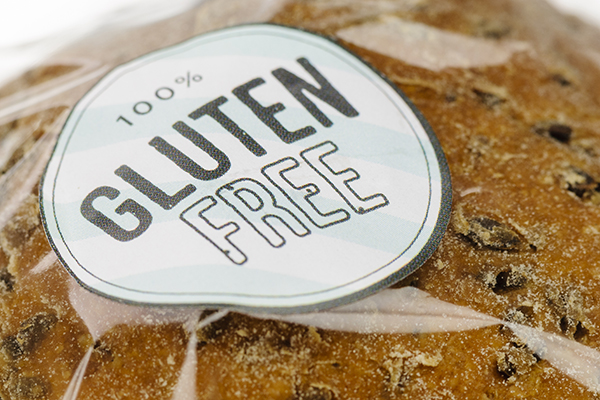Take a quick jaunt down any aisle in the grocery store, and you’ll see all sorts of declarations and promises.
But is the gluten-free, vegan cereal with high-fiber and no sugar added healthier than a similar one without those labels?
Well, it depends.
Health claims on food labels can be confusing and even feel deceiving — but they can also be helpful depending on what you’re looking for.
By checking out the front of a product and the back (where you can learn a lot more about a food from its nutrition facts label), you can make more informed choices.
Read on to learn what some of the most common nutrition claims mean — and how they can help you the next time you grocery shop.
The Most Common Nutrition Claims, Defined
While the U.S. Food and Drug Administration (FDA) and United States Department of Agriculture (USDA) regulate many claims on food packaging, some foods feature claims like “natural,” which doesn’t have a clear-cut definition or parameters.
There are three main categories of claims that can appear on packaging, according to Lacie Peterson, M.S., R.D.N., CDCES, a registered dietitian and nutrition instructor at Utah State University:
- Nutrient content claims: These address nutrients including (but not limited to) fiber, calories, cholesterol, sugar, sodium, and fat. This helps distinguish foods that are high or low in certain nutrients.
- Health claims: These cover a relationship between a food and health condition, such as heart disease.
- Structure and function claims: These describe a connection between a normal body function and a nutrient, such as “calcium builds strong bones.” You’ll see them on foods and dietary supplements.
While nutrition claims may lure you in and make you interested in a product, remember Peterson’s advice: “The marketing is on the front of the package and the facts are on the back.”
Here’s a quick guide to some common ones you’ll encounter.
1. Low Calorie
This means the food has fewer than 40 calories — per serving.
Size matters, too: “The food has a reference amount customarily consumed greater than 30 grams or greater than 2 tablespoons,” Peterson says.
In other words, a food manufacturer can’t claim a product is low calorie if the serving size is unreasonably small.
2. Cholesterol-Free
The food must contain fewer than 2 milligrams of cholesterol and 2 grams or less of saturated fat per serving.
“If a food is claiming to be low in cholesterol or cholesterol-free it does not mean the food is fat-free,” Peterson says. “Vegetable oils are 100% fat but are also cholesterol-free.”
3. Vegan
The food does not contain any animal products.
“While an eating pattern that is more plant-based can be great for health, just because a food is vegan doesn’t automatically mean that it’s healthy,” says Danielle Gaffen, M.S., R.D.N., L.D.
Case in point: Oreos are vegan. Does that mean they’re healthy? Nope.
4. Gluten-Free
The food contains less than 20 parts per million (ppm) or 20 milligrams of gluten per 1 kilogram (2.2 pounds) of food.
Gluten is the general name for the proteins found in wheat, rye, barley, and triticale, Peterson says.
You’ll see this claim on many foods that typically contain gluten — such as gluten-free breads, crackers, cookies, and sauces — as well as foods that don’t usually contain gluten, like applesauce.
5. Fat-Free
The food must contain less than 0.5 gram of fat per serving.
“Many fat-free products replace the fat with extra added sugars or sodium to try to improve the taste of the now fat-free product,” Gaffen says.
6. Sugar-Free
The food contains less than 0.5 gram of sugar per serving.
Gaffen says many sugar-free foods taste sweet because they include artificial sugars such as sorbitol, which can cause gastrointestinal distress (such as cramping and diarrhea) if you consume large quantities.
7. No Added Sugar
No sugars were added to the food during processing or production. “This includes ingredients that contain sugar, such as juice or dry fruit,” Peterson says.
8. A Good Source of…
The food contains 10% to 19% of the daily recommended value of a specific nutrient.
9. An Excellent Source of…
The food contains 20% or more of the DRV of a specific nutrient.
“This claim can be helpful to pay attention to if you’re trying to increase certain nutrients in your diet,” Gaffen says.
10. High in…
The food contains at least 20% of the DRV of a specific nutrient. If a product has multiple foods, like a frozen dinner, the label must identify to which food the claim applies.
For instance, “the brown rice in this meal is high in fiber.”
11. Low Sodium
The food contains 140 milligrams of sodium or less per serving. Very low-sodium foods contain 35 milligrams or less per serving, Peterson says.
Similar to the low-calorie claim, a food with “low sodium” on the label must have a large enough serving size (30 grams or more than 2 tablespoons).
12. Calorie-Free
The food contains less than 5 calories per serving. The label must state if a food is naturally calorie-free (meaning it is calorie-free without any special processing).
Gaffen suggests you pay attention to the serving size because while the calories may still be minimal, several servings of a calorie-free food may not necessarily total zero calories.
13. Non-GMO
The product is not genetically modified, meaning the genetic make-up of the food has not been altered in a lab using genetic engineering or transgenic technology.
But not all genetic modification is bad.
“While everyone deserves to be informed of GMO versus not,” Gaffen says, “genetically engineering a crop has been used to improve versions of existing ones.”
For instance, a crop may require fewer pesticides if it is modified to be more resistant to pests.
14. Made with Organic Ingredients
The food contains at least 70% organically produced ingredients (excluding salt and water).
“This product cannot use the green organic seal,” Peterson says.
15. Certified Organic
The food contains a minimum of 95% organic ingredients (excluding salt and water). “Up to 5% of the ingredients may be non-organic products that are not commercially available as organic,” Peterson says.


